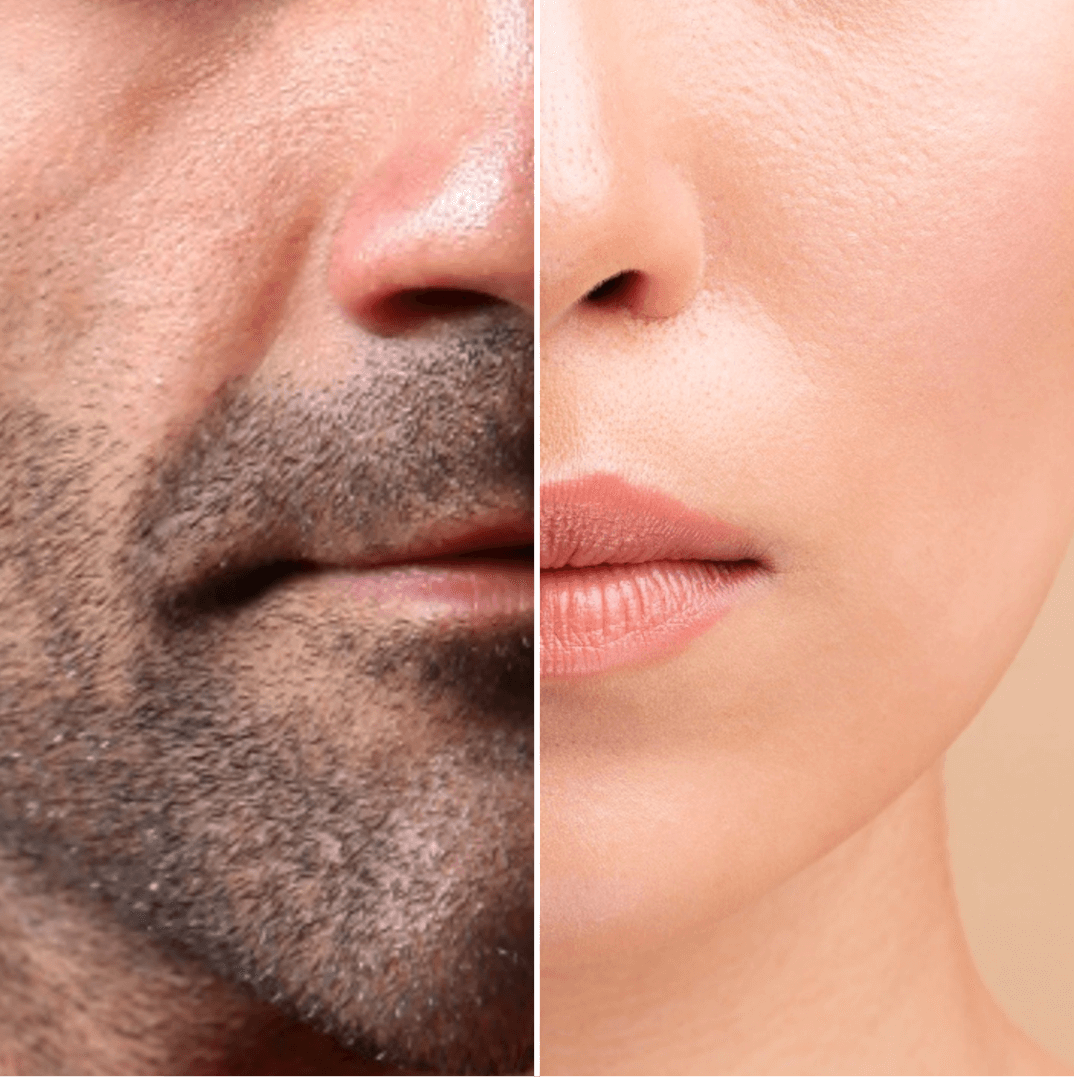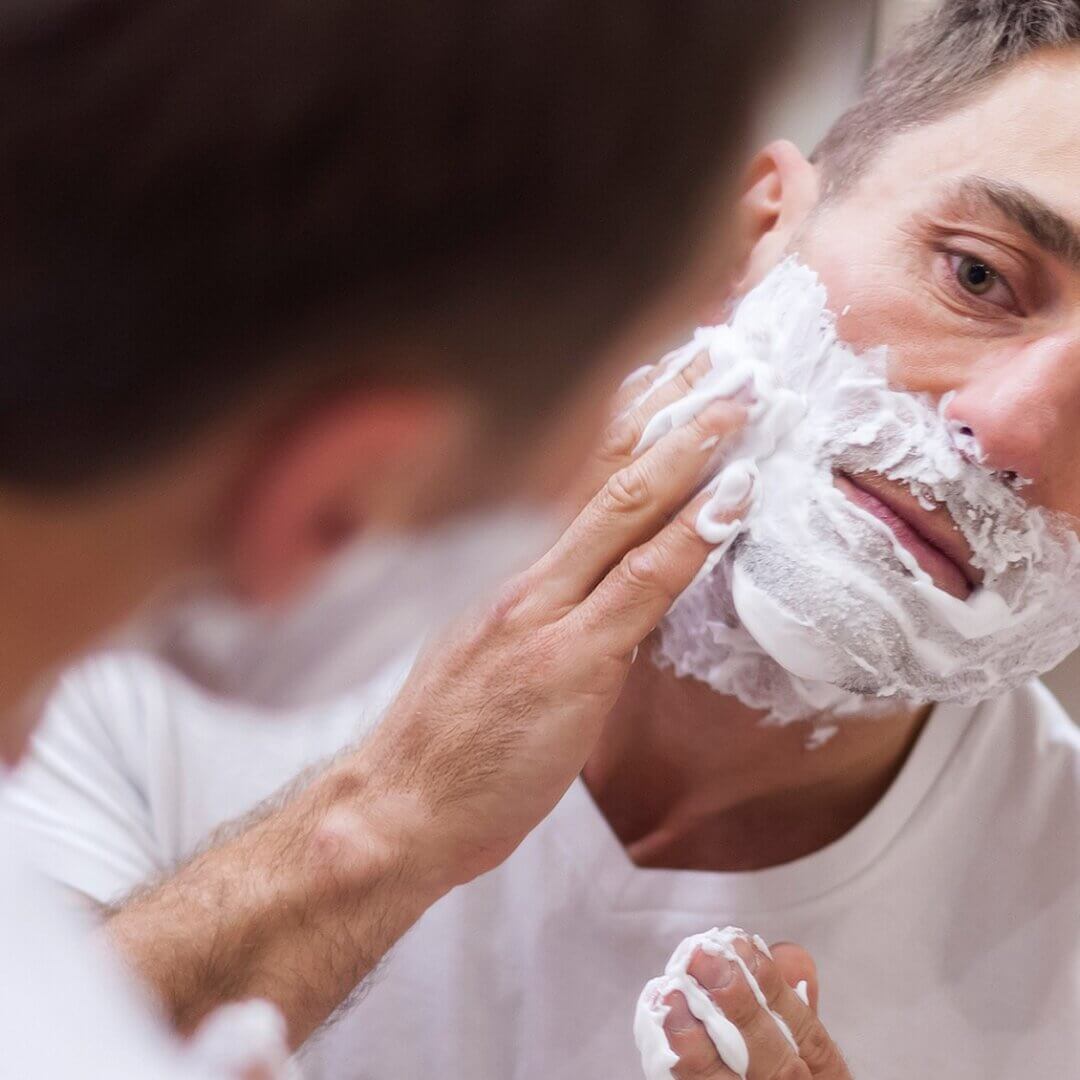
How does a woman's skin differ from a man's ?
November 8, 2024 - Tutorials and advice
The skin is a resistant yet vulnerable organ that covers every part of the body. There are visible differences between a man’s skin and a woman’s, and these differences raise a number of questions: Does a man have to use specific treatments, or can he use the same products as a woman? Does shaving damage the skin? Does a woman’s skin age faster than a man’s?
Although the skin’s core functions are identical for both men and women, and both are affected by the symptoms of skin ageing, in this article we’ll look at some noteworthy distinctions that may need to be taken into account in your skincare routine.
Many of the skin's functions are identical in men and women.
All mammals have the same skin structure, which comprises three distinct layers:
-
The epidermis is the outermost layer of the skin.
-
The dermis is just beneath it.
-
The deepest layer is the hypodermis.
In mammals, and therefore of course in men and women, the skin plays a number of vital roles.
-
It acts as an immune barrier, protecting the body from external pathogens like microbes and bacteria.
-
By virtue of its resistance, elasticity, and ability to absorb impacts (in large part due to adipose tissue found in the hypodermis), the skin provides physical protection for the internal organs.
-
Sweat glands help to regulate body temperature by dissipating heat.
-
Its vast number of nerve endings make it an essential sense organ, enabling us to perceive both danger and enjoyable sensations.
-
Thanks to melanin, the pigment that gives skin its colour and is overproduced when we tan, the skin protects us from the damaging effects of UV radiation.
These are crucial functions, so it’s no surprise that both sexes have them in common. However, the different physiologies of men and women result in a number of notable differences between women’s and men’s skin.
The different layers of the skin in women and men are not the same thickness.
Although the skin’s structure remains the same for men and women, men’s skin contains more collagen and is therefore thicker than women’s skin. That being said, density loss (characterised mainly by more sunken facial features and sagging skin) affects men and women in the same way because the quantity of collagen in the skin declines steadily with age. In women, however, hormonal changes during menopause appear to accelerate this decline.
This means that maintaining and preserving the skin’s collagen reserves is a shared concern that varies only according to customer age. This is why, here at FILORGA, we incorporate collagen boosters into most of our formulas.
Men's skin produces more sebum.
A number of dermatological studies
have demonstrated that men naturally secrete more sebum than women and that they also have larger pores. As a result, they are more likely to have oily, shiny skin and to suffer from acne.
But this does also mean that men will tend to have less dry skin.
This is a significant consideration that will influence treatment choices. If you’d like to find out more, this article was written by our experts to answer all the questions our customers may have about oily skin and how to manage it.
Differences in hair types.
The difference between male and female body hair is obviously an important consideration.
Hair is produced in hair follicles
(in pilosebaceous units, to be more precise) located in the dermis and hypodermis. These are found all over the body, with the exception of the soles of the feet, the palms, the navel, and parts of the genitalia. Men have more hair follicles than women, and their hormonal makeup (testosterone specifically) means that more hair grows on the surface of the skin.
Shaving, particularly if it’s done every day, puts stress on the skin. It removes a significant number of cells from the epidermis, the outermost layer of the skin, leaving it more prone to irritation and vulnerable to external stresses. Frequent small cuts can also lead to imperfections on the skin’s surface over time.

FILORGA's products are for both men and women.
As we have seen, there are at least as many similarities between a man’s and a woman’s skin as there are differences. This is why beauty products should always be chosen according to your needs and personal preferences. Naturally, our ranges of anti-ageing treatments have been designed to appeal to both women and men with their simple packaging and fresh, light scents.
FILORGA products that are popular among men.
Nevertheless, based on the extensive positive feedback we receive from our male customers, it would appear that some of our treatments are particularly popular with them.
Men really like:
-
The light textures of our HYDRA-HYAL range, which provides deep hydration for the skin and soothes irritation.
-
The matte-finish versions of creams that help regulate excess sebum.
-
The AGE-PURIFY range, which targets wrinkles and imperfections on combination and oily skin.
Laboratoires FILORGA’s scientific expertise.
As we’ve seen, men’s and women’s skin can both differ and be alike. Since our treatments are designed for both women and men, we feel that the most important thing is to find the product that’s right for you.
We like to explain to our readers how we develop our products and demonstrate the science behind each of our formulations so they can choose the treatments that work best for them. In the “Magazine” section of our site, you’ll find a wide range of detailed, informative articles on everything there is to know about the skin, its properties, and its needs. This means you can:
-
Gain a better understanding of the structure of the skin and the role of keratinocytes or the stratum corneum.
-
Become more familiar with hyaluronic acid and its benefits for the skin.
-
Learn how to counter oxidative stress.
-
Find out how we select our active ingredients and how we test our products.
-
And much more!
Sources:
Giacomoni, Paolo & Mammone, Thomas & Teri, Matt. (2009). Gender-linked differences in human skin. Journal of dermatological science. 55. 144-9. 10.1016/j.jdermsci.2009.06.001.
Rahrovan, S. & Fanian Md Phd, Ferial & Mehryan, Pedram & Humbert, P. & Firooz, Alireza. (2018). Male versus female skin: What dermatologists and cosmeticians should know. International Journal of Women’s Dermatology. 4. 10.1016/j.ijwd.2018.03.002.